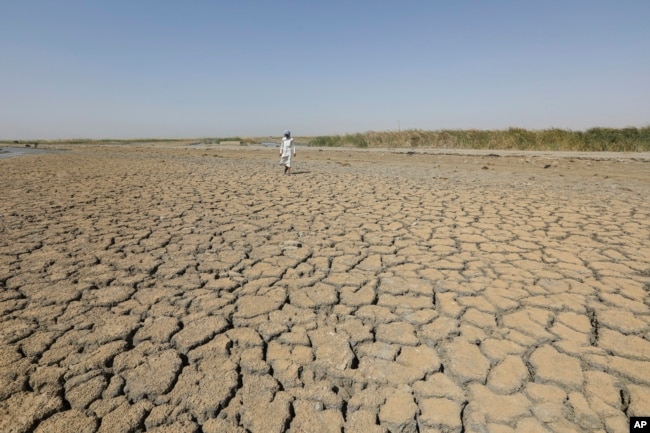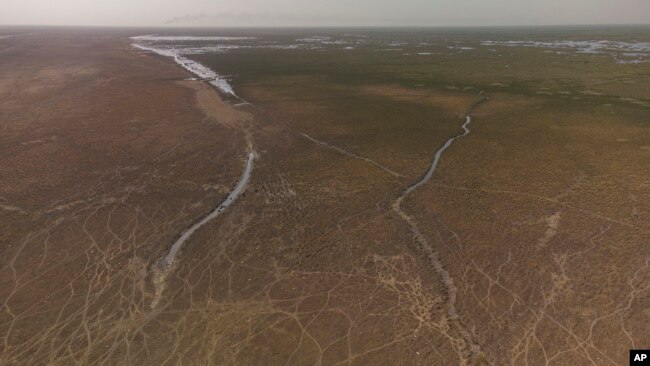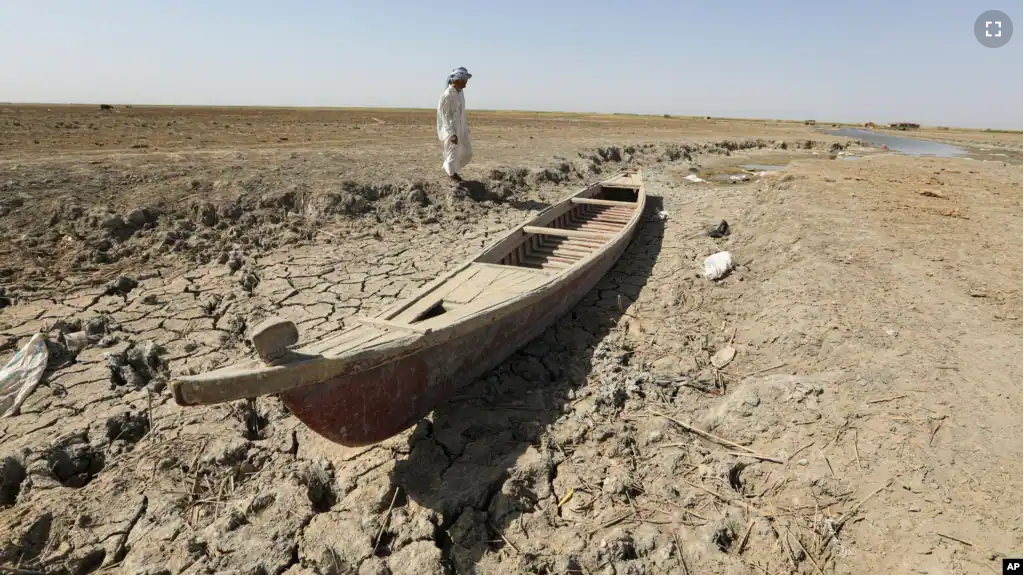The countries of Iraq, Turkey, Syria, and Iran share parts of the Tigris and Euphrates river system. The famous rivers are among the world’s most vulnerable waterways.
Water flow has fallen by 40 percent in the past 40 years as the four countries along their lengths seek to use the water for drinking, farming and industry.
Turkey and Iraq use most of the water. They agree that both countries must cooperate to protect the rivers. Sixty million people depend on their water.
But political problems and historical issues prevent an agreement.
Recently, the Associated Press (AP) spoke with people in Turkey and Iraq, including top officials and local farmers. The AP found that Iraq fears a possible 20 percent drop in food production in the coming years while Turkey struggles to balance Iraq’s and its own needs.
“I don’t see a solution,” said former Iraqi Prime Minister Haidar al-Abadi.
He said, “Would Turkey sacrifice its own interests? Especially if that means that by giving more (water) to us, their farmers and people will suffer?”
New dams built in Turkey
Turkey has built 19 dams on the Euphrates and Tigris Rivers and plans a total of 22. They are part of its Southeastern Anatolia Project, known as GAP. The project aims to develop the southeast, increase agriculture, and produce electricity.
At first, Turkey planned to provide water for 1.8 million hectares of land. But that amount was reduced to 1.05 million. Half the reduced goal has been met.
Farmers who receive water from GAP must use modern methods that Turkish officials say use two-thirds less water.
But for Iraqis, every drop of water used for farming or other purposes in Turkey means less for Iraq.

“A single truth”
Iraq depends almost entirely for water on the two rivers that come from outside its borders.
In 2014, Iraq’s Water Ministry prepared a report that detailed what it called “single truth.” AP reporters have seen the report, which has not been made public. It said in two years, Iraq’s water supply would no longer meet demand. It warned that by 2035, the lack of water would cause a 20 percent reduction in food production.
The predictions can already be seen in 2022. Lakes have dried up, crops have failed, and thousands of Iraqis are moving away.
Talks between Turkey and Iraq over many years have still not resulted in a long-term agreement.
Turkey sees itself as the owner of the beginning of the river system. It considers needs and decides how much to let flow downstream. But Iraq considers ownership shared and wants a more permanent agreement with defined limits.
Veysel Eroglu represents Turkey on water issues with Iraq. He told the AP that Turkey cannot accept releasing a fixed amount of water because river flows are unpredictable.
Eroglu said Turkey could agree to setting a ratio release – but only if Syria and Iraq provide detailed information on their water usage.
Turkey also finds it difficult to progress in the water talks because water officials from Iraq often change. Additionally, Turkey says Iraq must use water effectively.
One Iraqi ambassador said it was “a mistake” that his side once told the Turks that Iraqis knew 70 percent of their water was wasted on ancient farming methods. This led Turkey to increase its demands for Iraq to reform.

A numbers game
Iraq received an average flow of 625 cubic meters of water per second from the Tigris 10 years ago. Today, Iraqi water officials say the country gets only 36 percent of that because of less rainfall and a big dam in Turkey.
Ilisu Dam produces electricity, so water must be released downstream.
But how much and when depend on Turkish officials. They must keep the reservoir water level at 500 meters above sea level to produce electricity. But they face less predictable water flow into the reservoir.
Turkish officials say that with the dam, they can control the river flow to help Iraq by storing more water during floods and releasing water during dry periods.
But Iraqi officials say they depend on one-time agreements with Turkey which make planning difficult.
“They can cut water, they can release water. We urgently need a water agreement just to satisfy Iraq’s minimum requirements,” said Hatem Hamid. He is head of the National Centre for Water Resources Management.
Difficult decisions
Once Tigris River water reaches the Mosul Dam in Iraq, Hamid decides how much and where it goes in Iraq.
With shortages expected in 2022, Hamid had to make big cuts. Water amounts for agriculture were cut in half. Those cuts reduced the amount of water entering the marshlands of southern Iraq.
The result was an environmental emergency: Not enough water was entering the marshes to wash away salt from the ocean. Hamid tried to fix the problem, but the damage was done.
“Life has ended”
In the Chibayish marshes, dead animals float near the sides of the river, poisoned by the salty water.
Over the past two years, what was once green and full of life in the marshes has died and turned yellow. Salt from the sea has built up from two years without enough fresh water from the river.
Obeid Hafez, a farmer, once planted more than 1,000 hectares of wheat. Today, his land in southern Iraq is without life and his sons have gone looking for work in the cities.
“Life has ended here,” he said.
I’m Caty Weaver. And I’m Gregory Stachel.
Samya Kullab reported this story for The Associated Press. Gregory Stachel adapted it for VOA Learning English.
_____________________________________________________________
Words in This Story
vulnerable – adj. open to attack, harm, or damage
ratio – n. the relationship that exists between the size, number, or amount of two things and that is often represented by two numbers
reservoir – n. a usually artificial lake that is used to store a large supply of water for use in people’s homes or in businesses
minimum – adj. least or lowest possible in amount or degree
marsh – n. an area of soft, wet land that has many grasses and other plants
